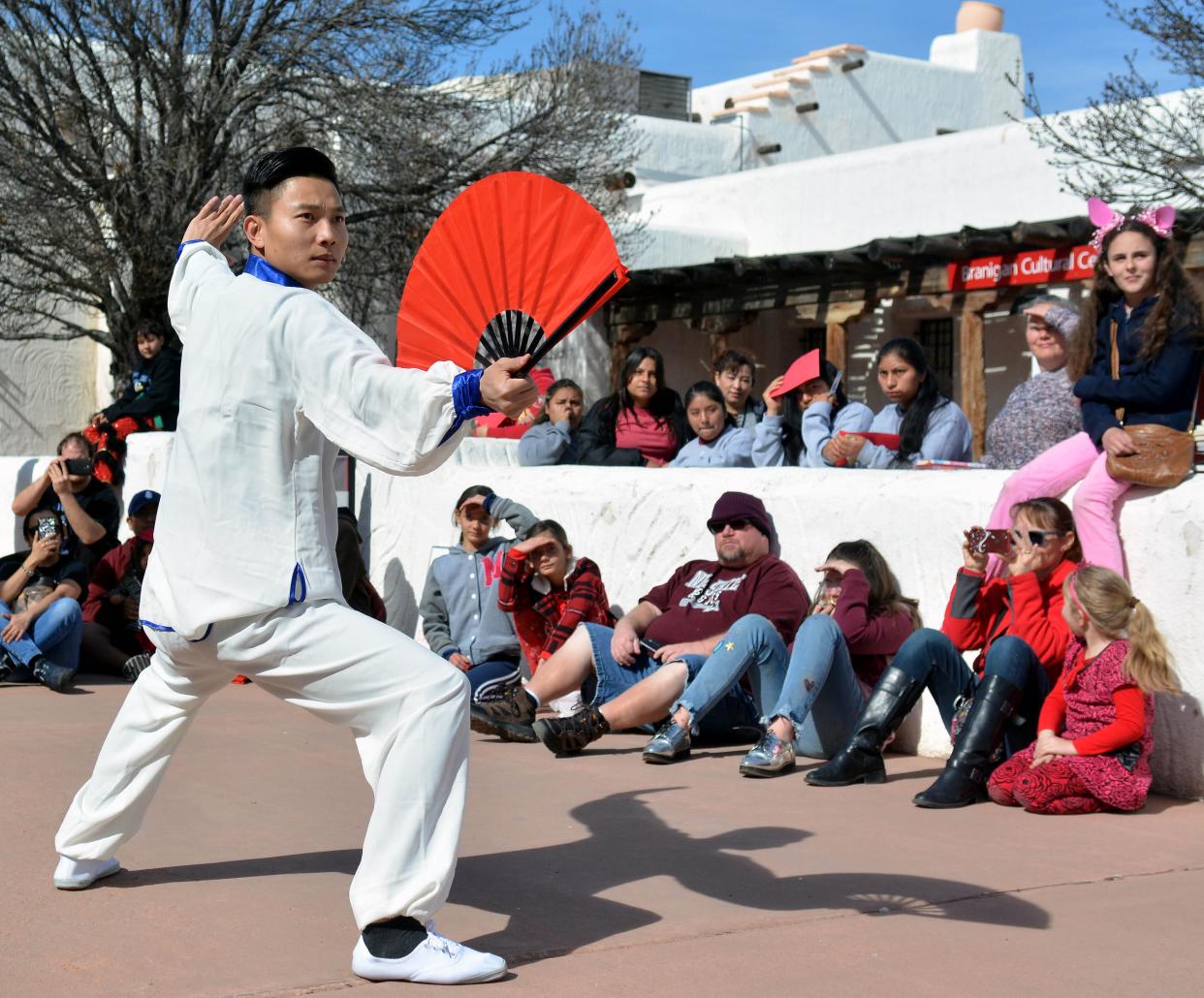Chinese New Year 2024: Dates, this year's animal, and why it's also called Lunar New Year
Lunar New Year, also called Chinese New Year, is approaching, and the celebration raises many questions: Where is it celebrated? How long does it last? And what animal represents 2024 in the lunar calendar?
Lunar New Year is most commonly celebrated in China and other Asian countries. That's why you also see it called Chinese New Year. It starts with the first new moon of the lunar calendar and ends on the first full moon, about 15 days later.
The lunar calendar is based on moon cycles, so the dates of the Lunar New Year celebration can change slightly each year.
Here’s everything to know about Lunar New Year 2024.
When is Chinese New Year 2024?
Chinese New Year 2024 starts on Feb. 10 and ends on Feb. 24.
How long does the Chinese New Year last?
Chinese New Year typically lasts about 15 days. However, a few days before and after are also often used for celebrations.
Lunar New year 2024 animal
In 2024, it's the Year of the Dragon.

Chinese New Year animals
Twelve animal symbols comprise the Chinese zodiac. Here are the animals and which birth years they are associated with:
Rat: 1924, 1936, 1948, 1960, 1972, 1984, 1996, 2008, 2020.
Ox: 1925, 1937, 1949, 1961, 1973, 1985, 1997, 2009, 2021.
Tiger: 1926, 1938, 1950, 1962, 1974, 1986, 1998, 2010, 2022.
Rabbit: 1927, 1939, 1951, 1963, 1975, 1987, 1999, 2011, 2023.
Dragon: 1928, 1940, 1952, 1964, 1976, 1988, 2000, 2012, 2024.
Snake: 1929, 1941, 1953, 1965, 1977, 1989, 2001, 2013.
Horse: 1930, 1942, 1954, 1966, 1978, 1990, 2002, 2014.
Sheep/goat: 1931, 1943, 1955, 1967, 1979, 1991, 2003, 2015.
Monkey: 1932, 1944, 1956, 1968, 1980, 1992, 2004, 2016.
Rooster: 1933, 1945, 1957, 1969, 1981, 1993, 2005, 2017.
Dog: 1934, 1946, 1958, 1970, 1982, 1994, 2006, 2018.
Boar/pig: 1935, 1947, 1959, 1971, 1983, 1995, 2007, 2019.
The dragon has a high reputation in Chinese culture and represents auspiciousness and imperial power. The dragon is a symbol of dignity, health, honor, success, luck and strength.
What does it mean to be a Lunar New Year?
Lunar New Year is the celebration of the arrival of spring. It is also known as the Spring Festival in China.
Is Chinese New Year and Lunar New Year the same thing?
Chinese New Year and Lunar New Year are used interchangeably. The term Lunar New Year reflects that many countries in addition to China celebrate the occasion.
Why is Chinese New Year called Lunar New Year?
It is called Lunar New Year because it marks the first new moon of the lunisolar calendar traditional to China, South Korea, Vietnam and other east Asian countries.
How did Lunar New Year start?
There are many legends of how the Lunar New Year festival originated.
One legend that dates back thousands of years is that of Nian, a beast who ate human flesh on New Year’s Day. Nian was scared of the color red, loud noises and fire, so red paper decorations were put on doors, lanterns were lit and firecrackers were used to keep the beast away.
Chinese New Year traditions around the world
About 10 days before the Lunar New Year, houses are cleaned to remove any bad luck inside. This is called “sweeping of the grounds,” according to Britannica.
Chinese New Year traditions often center around ushering out the old year and bringing luck and prosperity into the new one. Firecrackers, fireworks, red clothes and decorations are used. Young people are given money in red envelopes. There is a feast, and relatives who have died are honored.
In Vietnam, parades include the Mua Lan, a symbol of strength which is a hybrid lion, dragon and unicorn. Other Vietnamese traditions for Lunar New Year include burning incense and inviting ancestors to join in celebrations.
In Korea, it is traditional for people to wear the formal hanbok, but nowadays people prefer informal clothing. There is a tradition of Sebaetdon which is offering paper money in silk bags with traditional designs.
The last event of Chinese New Year is the Lantern Festival, where people hang glowing lanterns in temples or use them in a nighttime parade. The dragon is a Chinese symbol for good fortune, so a dragon dance is commonly performed, according to Britannica.
All of these traditions and more have made their way to the United States and other countries where people celebrate Lunar New Year.
What are the 7 lucky foods for Chinese New Year?
The seven lucky foods to eat during Lunar New Year are:
Yú (fish), said to bring an increase in prosperity.
Jiaozi (dumplings), for wealth.
Chun Juan (spring rolls), for wealth.
Tang Yuan (glutinous rice balls), for family togetherness.
Good Fortune Fruit, for fullness and wealth.
Nian Gao (sticky rice cakes), for a higher income or a higher position.
Chang Shou Mian (Longevity Noodles), for happiness and longevity.
Reporter Dina Kaur contributed to this report. Reach the reporter at dina.kaur@arizonarepublic.com.
This article originally appeared on Las Cruces Sun-News: Chinese New Year 2024 dates, animal, and why it's also Lunar New Year
